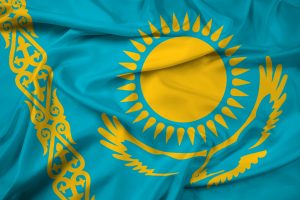Kazakhstan’s Prosecutor General Berik Asylov, in recent remarks to the country’s parliament, the Majilis, laid out the government’s allegations that the unrest in January 2022 — known as Bloody January — was essentially an “attempted coup.”
This week marks the one-year anniversary of the January events: Protests that originated in frustrations over fuel prices in western Kazakhstan quickly spread across the nation, morphing into larger protests about the political state of affairs in the country. Over the course of a week, peaceful protests were paralleled by riots and violence. According to official figures, 238 people killed, more than 4,500 injured, around 10,000 detained. Several hundred of those detained were reportedly tortured.
In January 2022, amid the chaos, Kazakh President Kassym-Jomart Tokayev blamed 20,000 “bandits” and “foreign-trained terrorists” for the unrest. That narrative was matched, however, by the January 6, 2022 removal of National Security Committee (NSC) chief Karim Massimov, followed by his arrest on treason charges. In March 2022, Tokayev spoke of unnamed “traitors” as the engine behind the January events.
Asylov this week outlined the government’s version of what happened in January 2022, but provided few new details.
The criminal cases against Massimov and 17 others are classified, though Asylov did confirm to Vlast that the former security chief can be considered the leader of the alleged conspiracy. Asylov said the coup was “secretly prepared for the whole of 2021.”
“Organized criminal groups were among the perpetrators,” he said. “Some of them underwent radical training. They recruited people, garnered weapons, bought walkie-talkies and cars. The investigation established that some individuals working in law enforcement were in charge of this subversive work.”
Former Minister of Defense Murat Bektanov, who was arrested in February 2022 on charges of “inaction,” was also implicated, with Asylov alleging Bektanov gave “illegal orders” and “abandoned key military facilities.”
In essence, Astana’s narrative suggests a grand conspiracy perpetrated by Kazakhstan’s security agencies. One thing that has not been clarified is a motive: Why? To what end?
Massimov had headed the NSC since 2016. Massimov previously served as head of the presidential administration (2012-2014), twice as prime minister (2007-2012, 2014-2016), and occupied other significant posts. He did not, however, have a political career separate from that of Kazakhstan’s First President Nursultan Nazarbayev.
Nazarbayev has been little mentioned, a detail that looms large for its absence.
The U.N. Working Group on Arbitrary Detention called for Massimov to be released in an October 2022 opinion, which highlighted the overwhelming secrecy of the case.
Other questions remain unanswered. For those who lost family and friends during the unrest, there have been few answers about how and why their loved ones were killed, but plenty of accusations by the state that those killed were either attackers or otherwise at fault. The same holds true for those who have alleged torture at the hands of the authorities.
One final question: If this grand conspiracy was a year in the making, how did Tokayev’s government miss it?

































